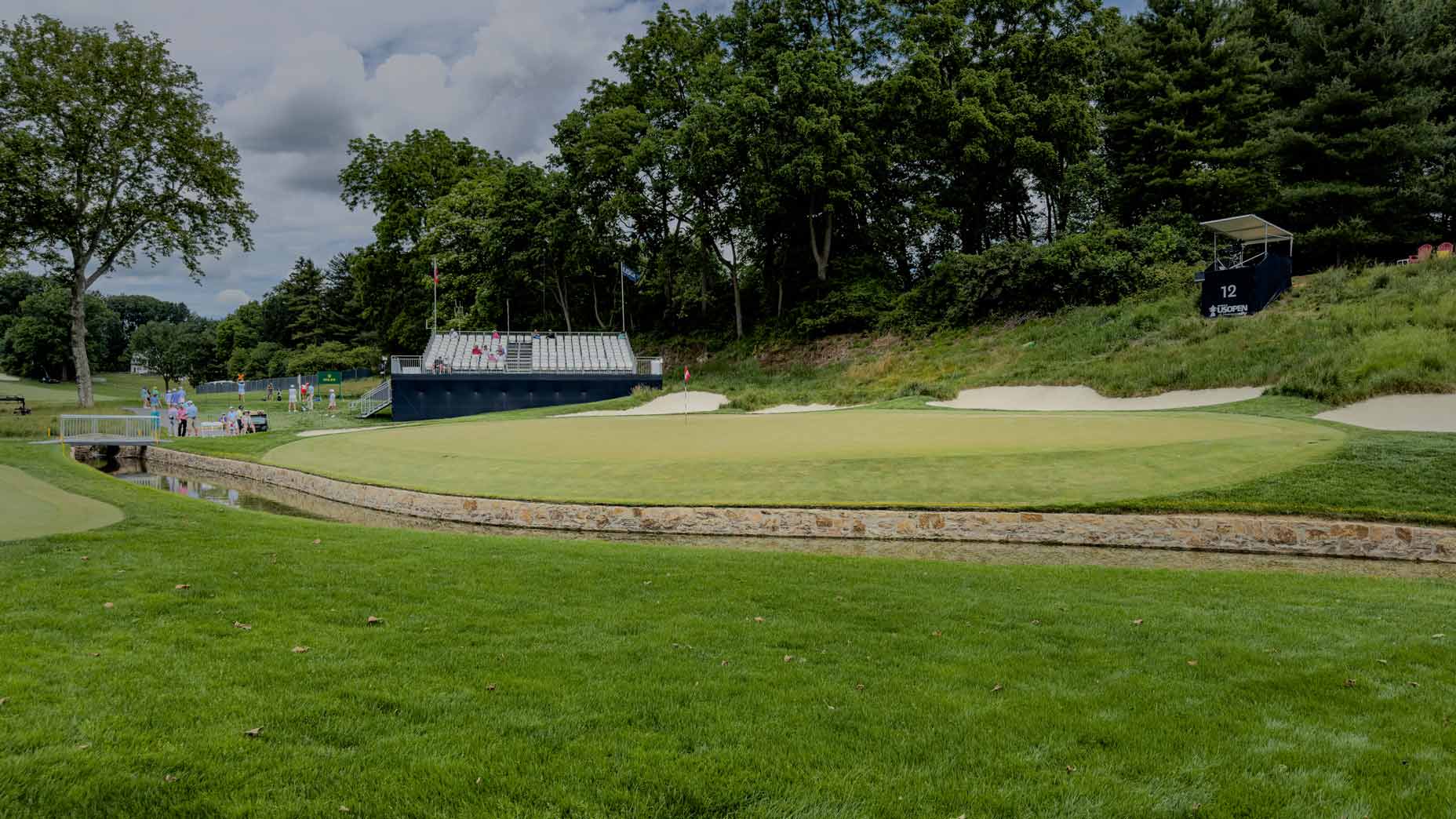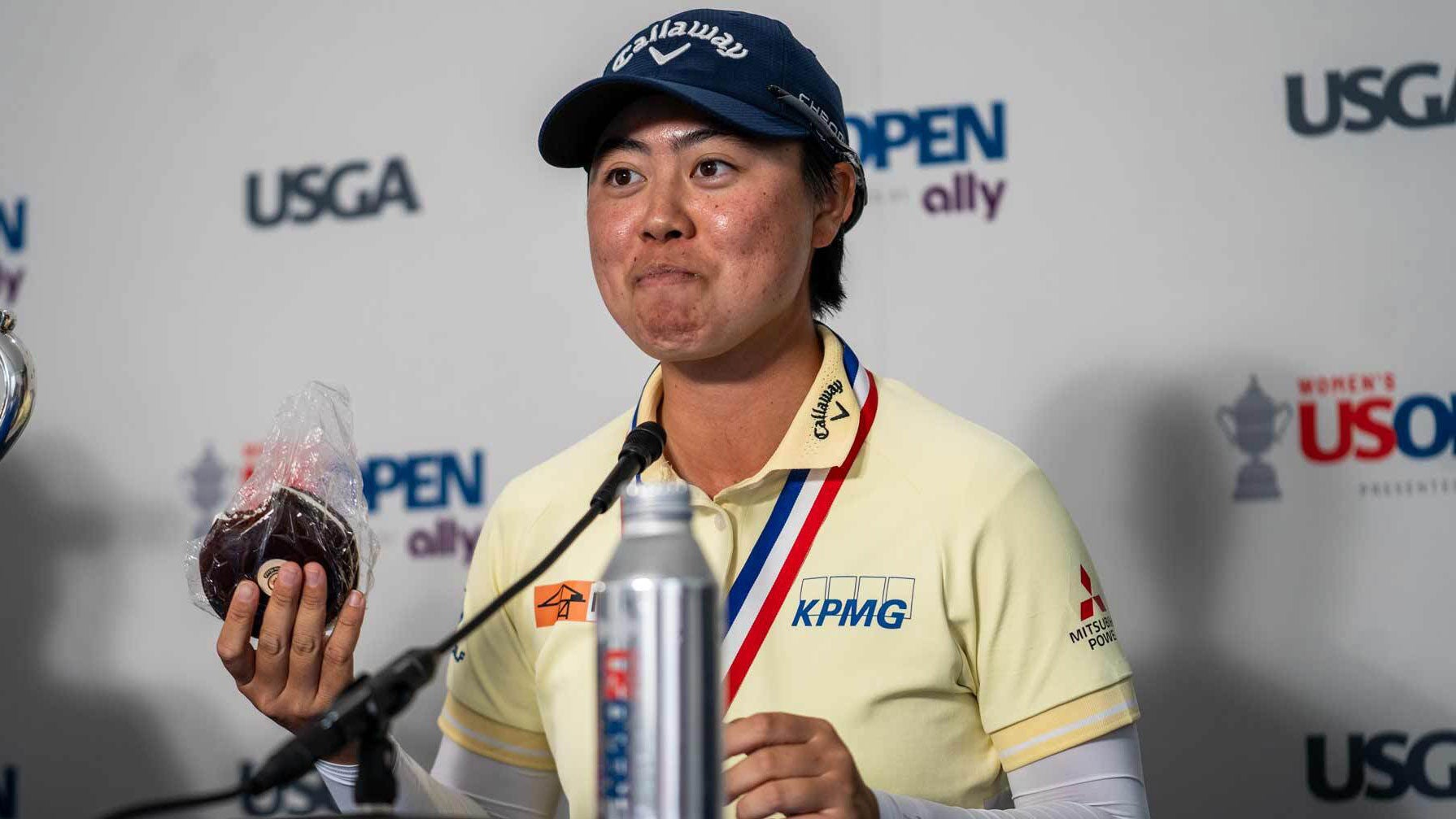At a classic U.S. Women’s Open venue, 1 hole stands out

Lancaster CC's 12th hole will prove difficult this week.
Jack Hirsh/GOLF
LANCASTER, Pa. — In Gee Chun has a sentimental connection to Lancaster Country Club and its 12th hole.
Chun won the first U.S. Women’s Open contested here nine years ago and has since maintained a connection to the 1920 William Flynn design by starting a foundation to help club employees and their dependents go to college.
When she triumphed in 2015, she also has fond memories of standing on the elevated 12th tee.
“That hole was the first time I heard, ‘Let’s go, Dumbo’ from the fans because I didn’t expect no one knows my nickname Dumbo,” Chun said Wednesday. “So I was so surprised the fans already knew my nickname.”
Sentimental value aside, the hole will likely be memorable for many in the field this week at the 2024 U.S. Women’s Open. But that’s because of how difficult it may play.
The 181-yard par-3 plays from an elevated tee down about 50 feet to what is the shallowest green on the course, less than 20 yards deep, guarded by water short of the green. That green plays shallower than it really is, thanks to the severe back-to-front pitch — a classic characteristic of Flynn courses.
Calamity struck there often in 2015 as there were 31 double bogeys made on No. 12 for the week, more than any other hole.
But what makes the hole truly unique is the downhill approach shot. The 27 holes at Lancaster Country Club are built on 427 acres of rolling Central Pennsylvania farmland terrain. While many of the tee shots on the championship course are played to fairways well below the tee boxes, there’s an imbalance of approach shots played uphill, 11 in all.
The frequent uphill and often blind or semi-blind approaches at Lancaster are a potential showcase of the course’s teeth, and one of the reasons Chun says players and caddies are calling it a “true major golf course.”

At No. 12, even with the relief coming after four consecutive uphill approaches, it doesn’t get any easier. The drop is so severe that players will have a tough time judging the actual distance, or even where their balls might land once in the air.
That elevation change also disguises just how severe the back-to-front slope of the green is. That’s what scares World No. 1 Nelly Korda.
“From the tee box you can’t see how sloped of a green that is, but then once you get onto that green you’re like, oh, my gosh, you’re coming in with a 6-iron,” Korda said Tuesday. “If you’re long, in a sense, you’re kind of screwed. If you’re short, you’re screwed too.”
The drop also causes problems with judging the wind, according to World No. 6 Rose Zhang.
“Especially if the wind picks up in the afternoon. Just making sure you’re landing it on the green. You don’t really know how much it’s going to release,” she said.
Any shot that finds the creek crossing in front of the green won’t just be penalized with the drop. The fairway cut in front of the green is pitched toward the green, making it that much more difficult to hit a pitch shot.
Just watching players practice Tuesday and Wednesday before the tournament, shots can even land on the putting surface, but roll back into the creek because of the slope.
The slope isn’t unique to No. 12, there are plenty of little slopes and undulations across all the greens at LCC that will put a premium on ball striking.
“Making sure you’re just hitting the greens out here this week, because they’re so small and so undulated, is going to be key,” Korda said.














